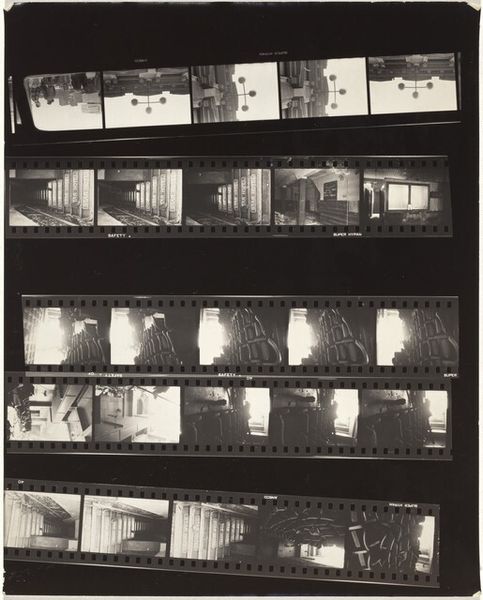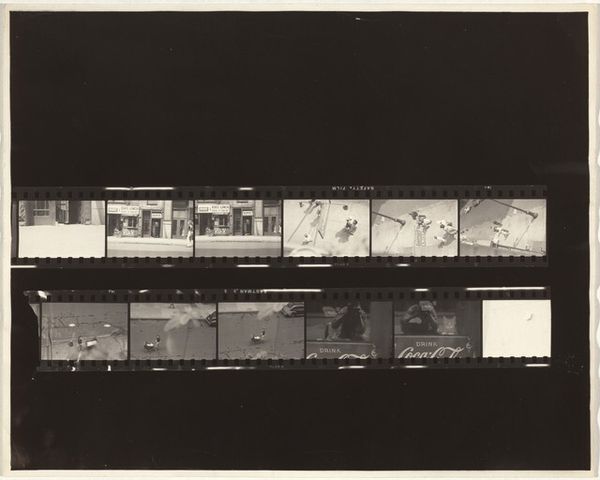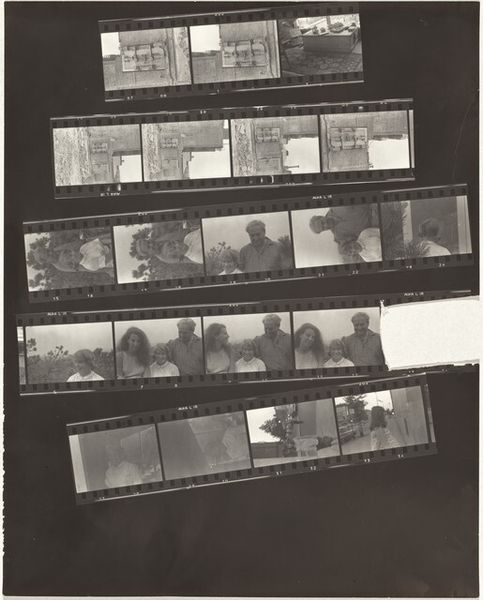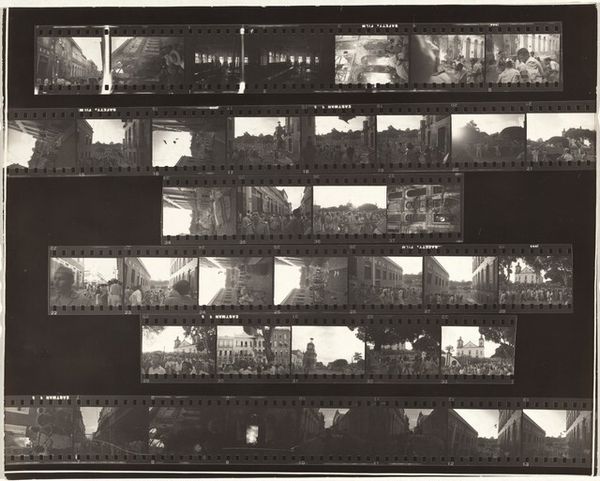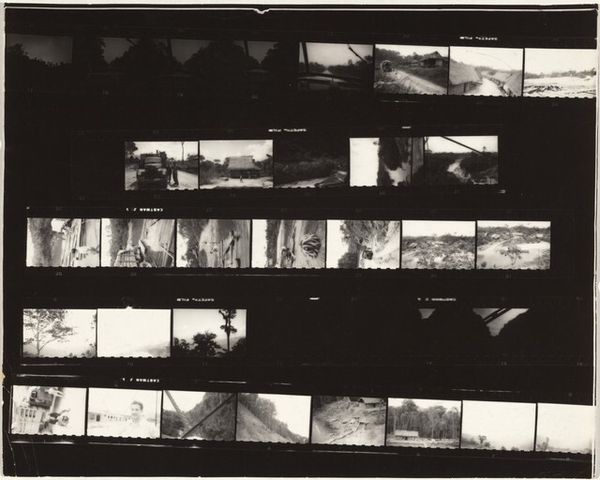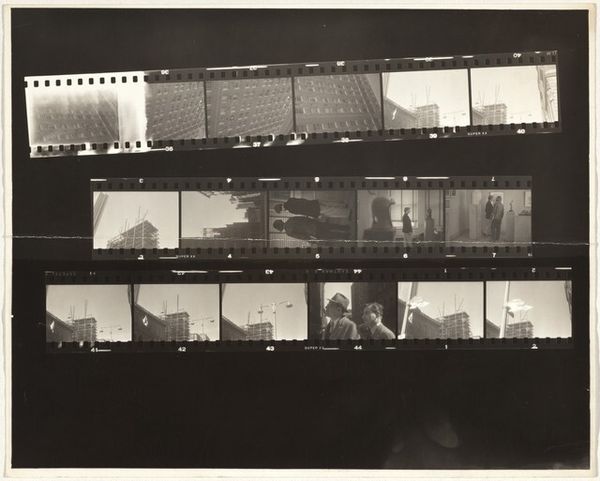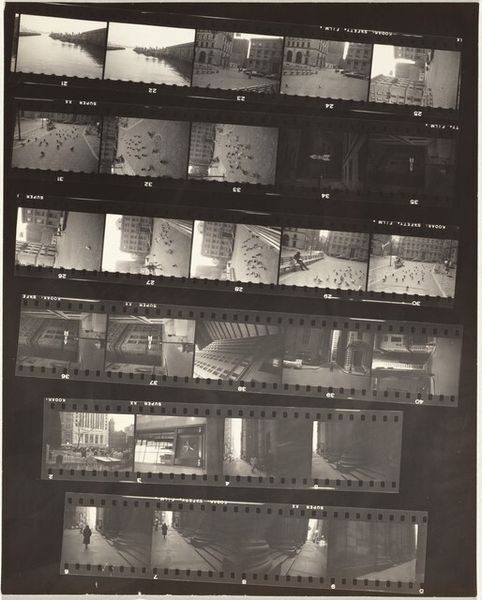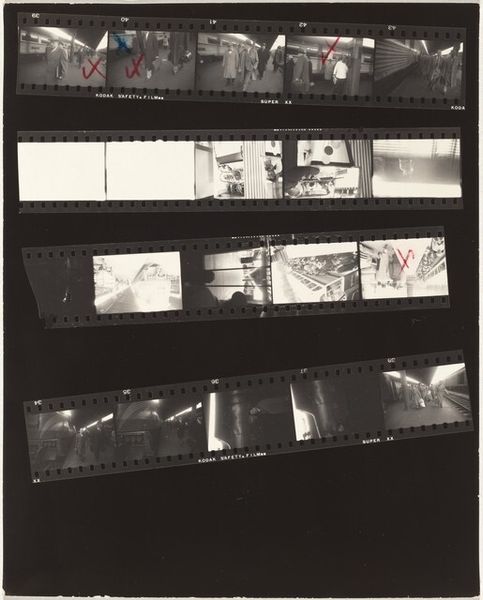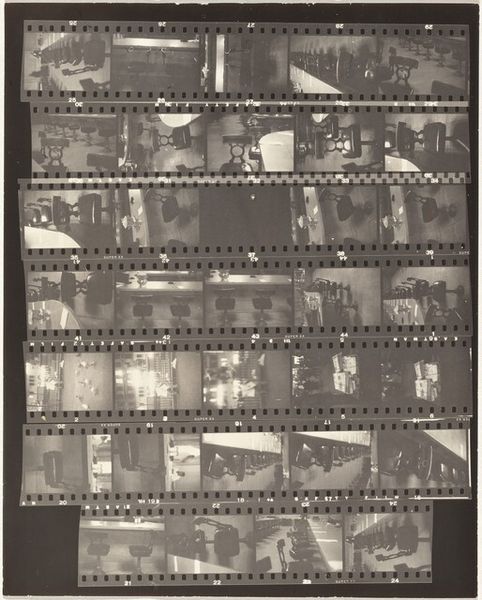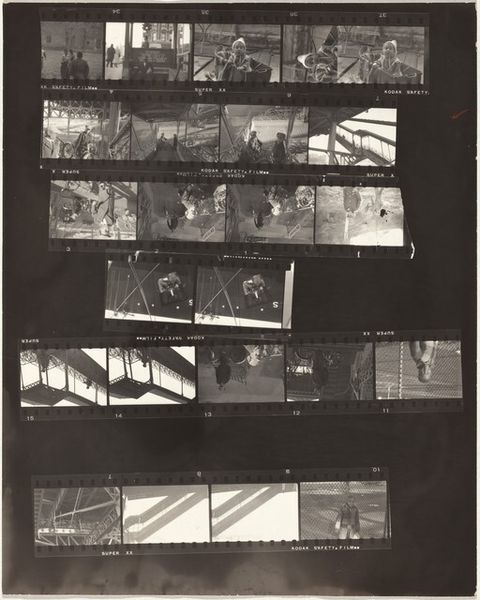
#
print photography
#
film photography
#
wedding photograph
#
3d printed part
#
wedding photography
#
ceremony
#
archive photography
#
couple photography
#
holiday photography
#
celebration photography
Dimensions: overall: 25.3 x 20.5 cm (9 15/16 x 8 1/16 in.)
Copyright: National Gallery of Art: CC0 1.0
Editor: Here we have Robert Frank’s "Guggenheim 408--Los Angeles," shot between 1955 and 1956. It presents two strips of 35mm film, almost like a contact sheet. I find the fragmented views of everyday life quite striking. What draws your attention most in this work? Curator: The use of film strips is very telling. Frank’s work is intrinsically tied to his journey through America. Exhibiting the filmstrips underscores not only the captured images but the process, the labor, and even the discard pile inherent in documenting a nation. Think about how this choice contrasts with traditional, highly curated photography exhibitions. Editor: That makes a lot of sense. Presenting the "failures" or in-between shots adds a layer of authenticity, resisting a romanticized view. But why frame it this way? Curator: Frank challenged the established norms of photographic representation. Mainstream media often presented a polished, idealized version of America, especially in the post-war period. Frank, through projects like *The Americans*, intentionally revealed a more nuanced, often harsher reality – social inequalities, urban alienation, the cracks in the American dream. These film strips are artefacts that bring light to Frank's entire editorial vision for America. How do you think that contributes to the image's meaning? Editor: By showcasing these outtakes, he subverts that polished narrative, creating an unedited glimpse of reality. Almost like a visual counter-narrative! Curator: Precisely. He democratized the image, questioning who gets to define “America” and how it’s portrayed. These were deliberate artistic and political choices that altered the trajectory of documentary photography. Editor: This piece has certainly given me a fresh way to look at documentary photography and its role in shaping social narratives. Thanks! Curator: And thank you. Discussing the relationship between art and its cultural context is always a learning process for me, too.
Comments
No comments
Be the first to comment and join the conversation on the ultimate creative platform.
